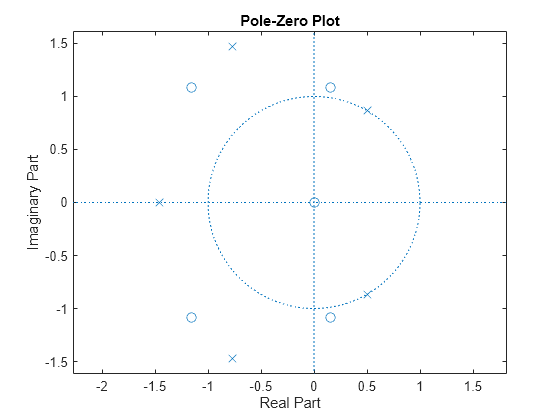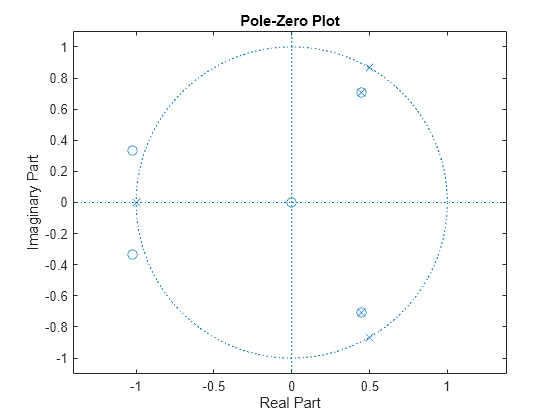invfreqz
Identify discrete-time filter parameters from frequency response data
Syntax
Description
Examples
Input Arguments
Output Arguments
Algorithms
By default, invfreqz uses an equation error method to identify the best
model from the data. The method finds b and a in
by creating a system of linear equations and solving them with the MATLAB®
\ operator. Here A(ω(k)) and
B(ω(k)) are the Fourier transforms of the polynomials a and
b, respectively, at the frequency ω(k), and
n is the number of frequency points (the length of h
and w). This algorithm is a based on Levi [1].
The superior ("output-error") algorithm uses the damped Gauss-Newton method for iterative search [2], with the output of the first algorithm as the initial estimate. This solves the direct problem of minimizing the weighted sum of the squared error between the actual and the desired frequency response points.
References
[1] Levi, E. C. “Complex-Curve Fitting.” IRE Transactions on Automatic Control. Vol. AC-4, 1959, pp. 37–44.
[2] Dennis, J. E., Jr., and R. B. Schnabel. Numerical Methods for Unconstrained Optimization and Nonlinear Equations. Englewood Cliffs, NJ: Prentice-Hall, 1983.

